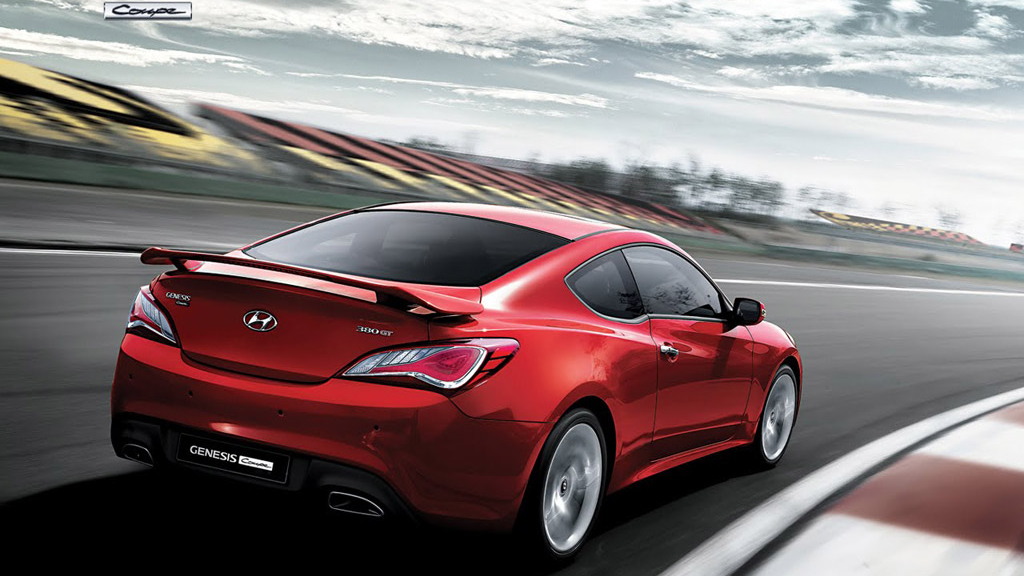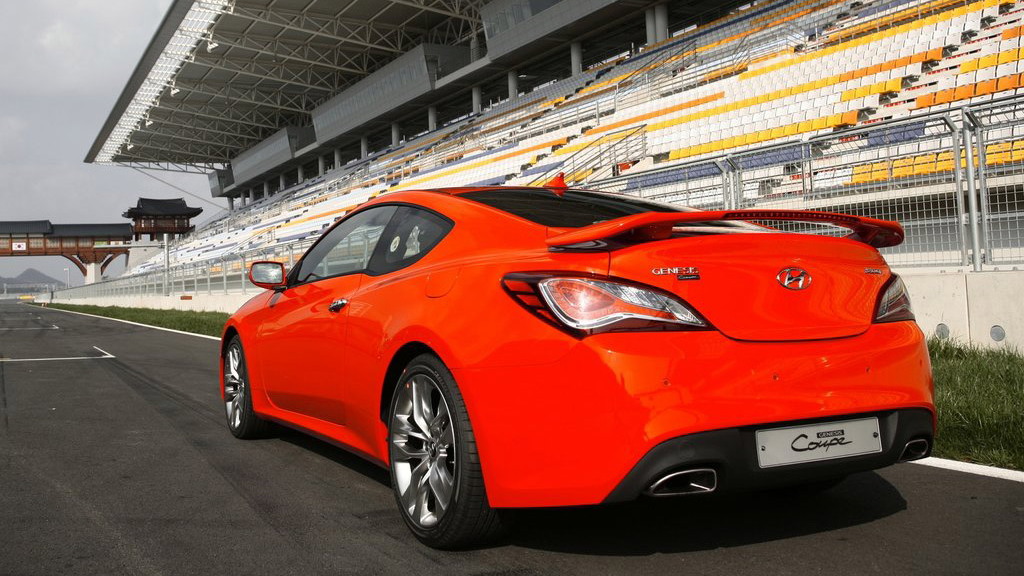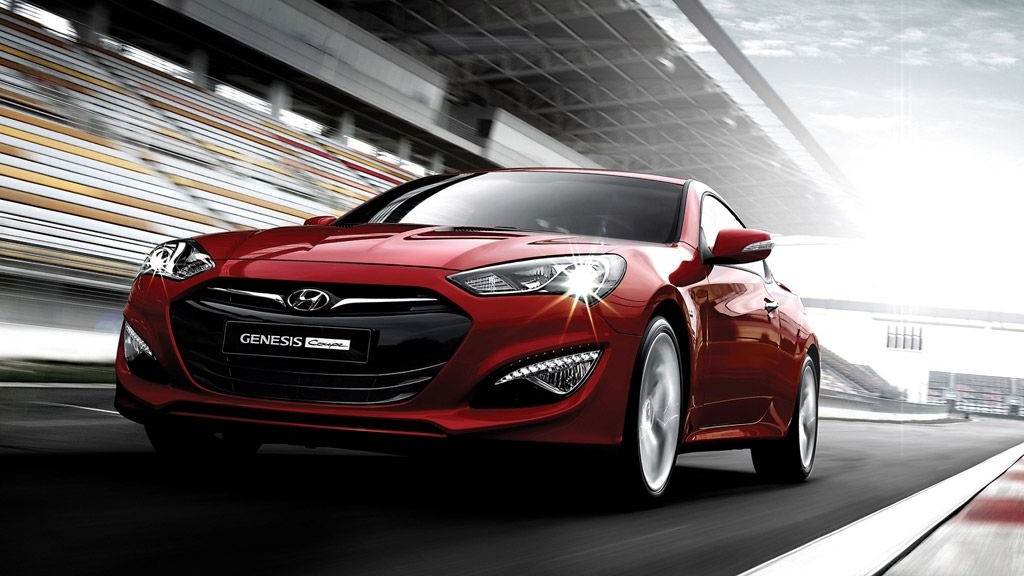The base 2.0T engine gets a new twin-scroll turbocharger, as well as a larger intercooler that's more thermally efficient, resulting in a rating of 274 horsepower (64 more than for 2012) and 275 pound-feet of torque (on premium fuel). With a six-speed manual transmission, it achieves an EPA 21 mpg city, 30 highway, but the big news is a new eight-speed automatic—developed in-house at Hyundai—that includes paddle-shift Shiftronic capability and returns 20 mpg city, 31 highway with the turbo four.
V-6 models also get a choice between those two transmissions, but they get a big boost in power and torque. Thanks to the incorporation of direct-injection technology, the 3.8-liter V-6 now makes 348 horsepower (42 more than for 2012) and 295 pound-feet of torque, with improved fuel economy for both transmissions (18/28 for the automatic, 18/27 for the manual).
Aiding the power output of the V-6 is a new dual continuously variable valve timing system and variable intake system, for strong breathing only when you need it. In addition, Hyundai has added an intake sound-induction pipe, that literally pipes some sound into the cabin. With either engine, there's a new, deeper cat-back exhaust system.
Hyundai says that the changes give the 2013 Genesis Coupe a better power-to-weight ratio than in the Infiniti G27 and BMW 335i, and it expects the V-6 Genesis Coupe to dash to 60 mph in the low five-second range, and on to a 149-mph, electronically-limited top speed. As for the turbo, it also gets the new Dual CVVT system, and Hyundai says its power-to-weight ratio is better than that of the Scion FR-S or Honda Si. Both engines run fine on regular fuel.
But the changes aren't restricted to powertrains. Hyundai has also retuned the suspension and added new low-velocity-control suspension dampers. R-Spec and Track models get a Torsen limited-slip differential, and on all models the Genesis Coupe keeps hydraulic, rpm-sensing rack-and-pinion steering, now recalibrated and with a quicker ratio. The automaker has added a telescopic steering adjustment (it only had tilt previously). Four-wheel disc brakes—ventilated in front—are standard, while larger 13.4-inch and 13-inch rotors, ventilated on all four wheels, are offered in R-Spec and Track models.
While performance-heads are likely to focus on all those performance improvements, Hyundai has honed the Genesis Coupe's look for 2013 as well. It's no about-face—enthusiasts will have no problem recognizing it—but the new model has a more aggressive front end, with crisper detailing around the headlamps and lower air dam, a trapezoidal, blacked-out bumper-and-grille area, and new character lines added to the flanks—like the Z-beltline that we've seen in some of Hyundai's other cars. In back, there are LED taillamps, and the rear diffuser has been blacked out, with dual asymmetrical exhaust tips integrated into it. Altogether, the new look is has the Genesis Coupe appearing a little wider, and a little angrier and more businesslike, in our opinion.
Inside, Hyundai has added new soft-touch materials, with a stitched-seam appearance for the instrument-panel top, plus an electroluminescent gauge cluster. And rear-seat access should be a bit easier from the driver's side with a new walk-in assist function. A center fascia tray and seatback pockets have been added, for more storage. Plus, all trims now include an expanded gauge display on the center stack.
HID headlamps are now offered in the Genesis Coupe, and the standard sound system includes a USB port for full iPod control, plus an aux-input. Options include Infinity premium sound, two-stage front-seat heaters, and a Proximity Key system with push-button start.
And for the first time, Hyundai's proprietary Blue Link suite of services is available on the Genesis Coupe, in its 3.8 Grand Touring and Track trims and in 2.0T Premium trim.
Check back, as we'll be posting more pictures of the new Genesis Coupe live from the Detroit show floor, along with video and other details as we uncover them.






